Stories from the Road
Tips on Travel
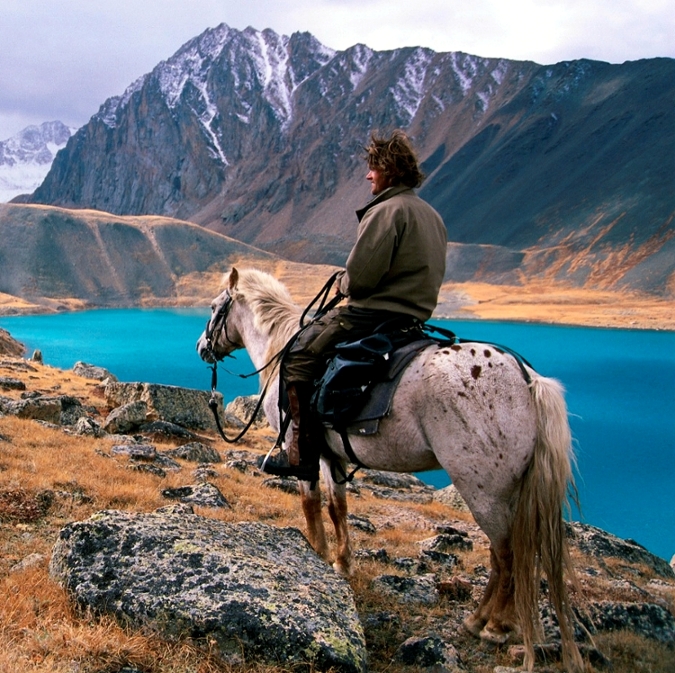
|
Stories from the Road Tips on Travel
|
|
Tim Cope (above) rode 6,000 miles solo during a three year journey from Mongolia to Hungary in the hoof prints of Genghis Khan.
Click on any image to go to the story.
 |
The Perils of Tech The value of halting the normal routines of life and learning to reflect inwardly may seem out of step with a world where everything seems gauged towards immediacy. Others have noted this difficulty. After returning from his ride across a desolate part of Tibet, Leonard Clark wrote, “We moderns have lost the art of just living.” He issued that warning in 1950. Since then the world has grown more hectic, crowded, strident and intrusive. Technology is an ever-present feature in our everyday lives, with the culture of computers being self-proliferating, self-interested and self-consuming. These developments have had a furtive influence on equestrian travel as well. Whereas early Long Rider websites supplied information about the route and the mission, Facebook, Instagram and Twitter are encouraging people to become obsessed with themselves and seek constant feedback on their activities. Canadian Long Rider Chris MacLuckie has written a special article about the need to keep tech at a distance for the safety of the horse and the happiness of the Long rider.
|
|
That rare thing, the Road
Horse “The Road Horse is a strong, vigorous, active kind, capable of enduring great hardship; its stature rather low, seldom exceeding fifteen hands; the body round and compact; its limbs strong, sadly this breed has of late been neglected by those preferring fashion instead of utility.”
|
|
|
|
The key to equestrian travel, the
Pack Horse Hollywood would have us believe the erstwhile western hero can travel for weeks on end, all the while covering hundreds of miles with just his saddle bags and a blanket. All too often when night arrives the cinematic rider has mysteriously produced a coffee pot, frying pan and enough food to fabricate a hearty evening meal. In fact even a brief list of camp necessities, let alone the food, soon makes it apparent one needs a pack horse and pack saddle. |
 |
Choosing the Right Horse After completing a journey from Scotland to Cornwall in 2017, Cathleen Leonard contacted the Guild and shared a vital observation. Her current journey had been successful. Her previous trip had ended prematurely. The English Long Rider was in no doubt as to what had happened. The reason was simple. Cathleen’s horses, Taliesin (left) and Oisín (right) had reacted very differently to the challenge of travelling without an equine companion. Her unique article explains the critical importance of selecting the right equine companion. |
 |
Comprehensive Hoof Boot Report In 2005 American Long Rider Bernie Harberts set off on his first equestrian journey. During that “ocean to ocean” trip Bernie encountered an emergency when his mule, Woody, lost a shoe. The resourceful Long Rider resolved the situation by creating an emergency hoof boot (left) made from “duct tape wrapped around inner tubes.” In the subsequent years Bernie has made many other rides, travelled thousands of miles and has used a variety of hoof boots. The result is The Hoof Boot Report a fully illustrated and totally comprehensive analysis of how three of the most popular hoof boots performed while travelling through bad weather, thick mud and challenging terrain. Bernie explained, “There have been tremendous advances in hoof boot design in the past decade. There are now so many decent contenders that we thought it would help to create a document that Long Riders curious about hoof boot travel will find useful.” |
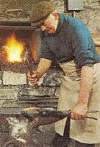 |
To Shoe or not to Shoe - an
Everlasting Dilemma |
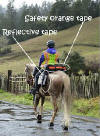 |
Long Rider Safety in the 21st Century In 2013 the worst accident in the history of modern equestrian travel took the life of a female Long Rider, left her companion seriously wounded and gravely injured their horses. English Long Rider Christine Henchie, 29, was killed instantly by an out-of-control bus in Tanzania. Her fiancé, South African Long Rider Billy Brenchley, 43, escaped death by inches but suffered a broken leg. That is why Meredith Cherry devoted so much time and effort to locate and obtain a set of equipment which would dramatically improve the margin of safety for her and her horse, Apollo. Meredith is the first woman to attempt to ride to the 48 states in the continental USA. She spent two years carefully preparing her route and studying equestrian travel history. The result of Meredith’s research is a set of equipment that makes the Long Rider and Road Horse highly visible to drivers. Meredith’s article provides photographs which show the equipment that is keeping her and Apollo safe during their 10,000 mile journey. |
 |
Saddlebag Safety Many Long Riders have used the waterproof Ortlieb saddlebags. Yet if not placed properly, the bags ride too low and may injure the road horse. German Long Rider Sabine Keller provides answers and photos on how to resolve this technical problem.
|
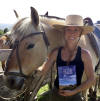 |
Rules for Buying a Horse Prior to departing on a solo ride across Argentina, Stevie Anna Plummer read the Horse Travel Handbook and sought advice from experienced Long Riders. Having spent months trying to locate and purchase horses fit for travel, Stevie Anna had learned how difficult that task was. She composed an article entitled “21 Rules for Buying a Horse”. As Stevie Anna clearly warns, this is a process which is filled with deception. Yet the 21 tips she provides a) make perfect sense b) are backed by excellent evidence and c) are written in such clear English that any of the many foreign readers who visit the Guild website can easily understand what she is advising them to do.
|
 |
Across Europe on Horseback - Border Nightmares and Fairytale Hospitality Beginning in 1993 Italian Long Riders Antonietta Spizzo and Dario Masarotti made multiple journeys across Europe and Russia. They provide an accurate description of the horrors of crossing borders on horseback, balanced by the joys of travelling through Europe and enjoying the local hospitality.
|
 |
Crossing International Borders |
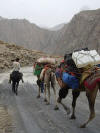 |
Busted by Bureaucrats In 2006 British Long Rider Stephen McCutcheon set off on a historic equestrian journey, a 10,000 kilometre ride from Delhi, India, to Beijing, China! No one had undertaken a journey in this area and of this magnitude since 1905, when the English Long Rider, Major Clarence Dalrymple Bruce, rode from Srinagar, Kashmir, to Peking, a trip of shorter duration. McCutcheon tried to make equestrian travel history by blazing a new path from the heart of the Indian sub-continent to the capital of China. It wasn’t to be. McCutcheon became the first person since the Partition of 1947 to have ridden across India and Pakistan. Having reached the western deserts of China, McCutcheon was attempting to ride through the Pamir mountains when he was nearly killed in a brawling mountain torrent. Having barely survived that danger, McCutcheon's expedition was then stopped by antagonistic Chinese officials. Steve was arrested because of a lack of proper paperwork and the magnificent journey was halted. |
 |
Horse Thieves Many things have changed since our ancestors began to ride thousands of years ago. But stealing a horse still causes a calamity with terrible repercussions. To learn how to guard against this crime it is necessary to understand that horses are stolen for a variety of reasons, including greed, revenge, tribalism, transportation, hunger, prestige and a desire for fame. Regardless of what motivates the culprit, the horse is a prime target in every country.
|
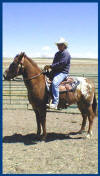 |
Struck by Lightning Before setting off to ride across America in 2003, Mike Winter told his wife and family not to worry. What could possibly go wrong on a short 3,500 mile trot across the United States? But Mike, and his mustang Apache, had no way of knowing they were riding straight into storm tossed trouble. "My Pal Apache," recounts the miraculous tale of the horse and Long Rider who were struck by lightning!
|
 |
Nightmare on the Bridge |
 |
Tunnels and Bridges
|
 |
Traffic – The Long Rider’s Nightmare |
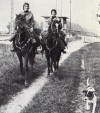 |
The Horse is Sick |
 |
Expect the Unexpected You think you’re ready. You’ve laid your plans with great care. The equipment is the best you could buy. You run through your mental check list one last time, decide you’ve done everything you can to prepare properly before setting off on your great equestrian adventure. So you take a deep breath, and then, just when you’re ready to put your foot into the stirrup, swing into the saddle and ride towards the unknown horizon that’s been beckoning to you for so long, an unforeseen foe threatens to stop you in your tracks.
|
 |
Tips on Equestrian Travel with Children With the aid of a ridiOng horse and two pack burros, Eliza Allen and her ten-year-old daughter, Zaydee Kiagoes, set off in 2016 to make a 3,500 mile journey along Australia’s Bicentennial National Trail. Eliza has shared valuable advice, explaining how parents can travel safely and successfully with children.
|
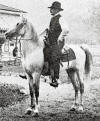 |
Davenport’s Dog
|
 |
Long Rider Discovers Defence Against Deadly Horse Attack The vast majority of people do not view horses as being potentially dangerous. They adhere to a common belief that horses are "prey animals" who "mean you no harm." This is a dangerous assumption. Having endured multiple encounters with wild horses, American Long Rider Samantha Szesciorka gave serious thought to how she might protect herself and her horse. Sage, from curious or aggressive equines. A special report explains how Samantha’s eyewitness experiences resulted in the creation of a simple, inexpensive, and effective invention that can work anywhere and will save Long Rider lives.
|
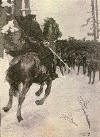 |
Wolves and Long Riders |
 |
Condors over Cuzco |
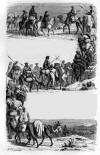 |
Insects - An Unexpected Danger Before setting off on an equestrian journey, most travellers realise they will be required to endure many hardships and survive danger. Common worries include deadly traffic and murderous criminals. What most horse travellers forget is that the lives of them and their horses are often at risk by a forgotten enemy – the insect. The list of horse travellers who became victims of deadly insects includes Alexander the Great and Charles Darwin. |
 |
Ticks and Travel – A Deadly Peril Lucy Leaf overcame a great many challenges during her 8,000 mile journey through the United States. Ironically her life was put at its greatest risk after she stepped down from the saddle. Like other Long Riders in Europe and North America Lucy became a victim of an insect-borne health hazard that poses a danger to millions of horses and humans in dozens of countries. Lucy’s vital report, “Ticks and Travel – A Deadly Peril,” is the first equine travel study to document how ticks carrying Lyme Disease represent one of the most frightening threats faced by Long Riders today. |
 |
Let the Tears Flow An emotionally powerful article, written by Australian Long Rider Donna Cuthbert, reveals the hidden heartbreak which lies like an undetected threat at the end of many equestrian journeys.
|
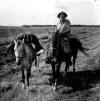 |
Long Distance Travel on Horseback Sergeant Robert Seney was one of the most significant American Long Riders of the late 20th century. A lifelong horseman, Seney’s mounted career stretched from the cavalry era to the age of the modern Long Riders. Seney rode the Pacific Crest Trail three times and made six journeys between 1967 and 1980. His combined travels through all 48 states exceeded 24,000 miles in the saddle. Bob Seney shared sound advice for would-be Long Riders.
|
 |
Maxims of the Saddle Daniel Denison Slade, one of America's first veterinarians, made an equestrian journey across New England in 1883. He was wise enough to provide would-be equestrian travellers with a list of tips on how to make a successful journey. The “Maxims” provided by the good doctor still hold true today.
|
 |
Reality versus Romance You think you’re ready. So you take a deep breath, put your foot into the stirrup, swing into the saddle and ride towards the unknown horizon that’s been beckoning to you for so long. Only things don’t work out as you planned. The dream you had longed to enjoy becomes an unexpected type of equestrian nightmare. |